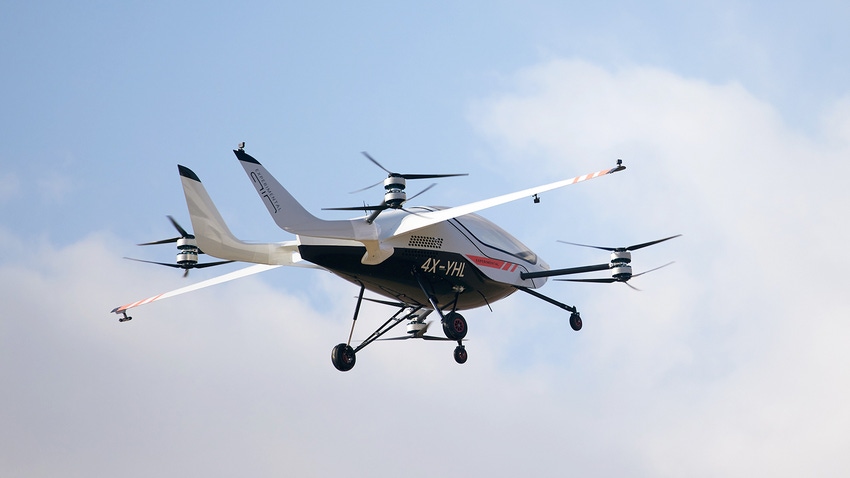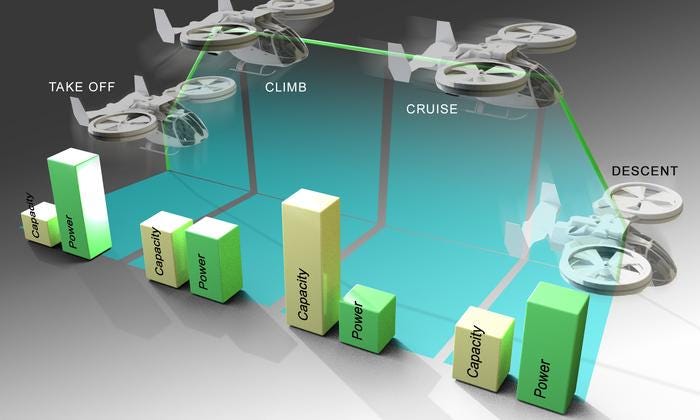The Powerful Draw of ORNL's eVTOL Batteries
How Oak Ridge National Laboratory tailors lithium-ion batteries for the unique requirements of electric vertical takeoff and landing (eVTOL) aircraft.

In the realm of transportation innovation, the skies are becoming the new frontier, thanks to advancements in electric vertical takeoff and landing (eVTOL) aircraft. These vehicles, ranging from delivery drones to urban air taxis, promise cleaner and more efficient aerial transportation solutions and may become widespread sooner than you may think. eVTOLs are also a stunning, unfamiliar sight to behold and can grip viewers’ imaginations—see for yourself.
At the forefront of this revolution is the Department of Energy's Oak Ridge National Laboratory (ORNL), where researchers are pioneering the development of high-performance batteries specifically tailored for eVTOL applications.
Traditional lithium-ion batteries, commonly used in electric vehicles (EVs), aren’t suitable for the unique demands of eVTOLs: Unlike EVs, which maintain a steady power draw, eVTOLs require varying amounts of power during different flight stages, including climbing, hovering, and descent. Recognizing this challenge, ORNL researchers embarked on a mission to create batteries capable of meeting the high power and performance demands of eVTOLs.
Studying under stress
Led by ORNL Corporate Fellow Ilias Belharouak, the research team is taking a novel approach to battery development. Rather than adapting existing EV battery technology, they are focusing on understanding how lithium-ion batteries perform under extremely high power draw conditions. By studying the behavior of battery materials under stress, they aim to engineer batteries with enhanced power and longevity specifically tailored to the needs of eVTOLs.
One of the key findings of the research is the significant impact of power and performance demands on battery longevity and durability. Unlike traditional EV batteries, which are designed for steady power delivery, eVTOL batteries must deliver short bursts of high power for takeoff and other flight maneuvers. This variability in power requirements poses unique challenges that ORNL researchers are working to address.

The operating phases of an eVTOL need varying amounts of power; some require the battery to discharge high amounts of current rapidly, reducing the distance the vehicle can travel before its battery must be recharged. Credit: Andy Sproles/ORNL, U.S. Dept. of Energy
To simulate real-world flight conditions, ORNL scientists conducted extensive testing using batteries manufactured at the DOE Battery Manufacturing Facility. By subjecting these batteries to simulated climb stages of eVTOL aircraft, researchers gained valuable insights into battery performance and degradation under demanding flight conditions. The findings underscored the importance of real-time testing and performance evaluation to ensure the safety and reliability of eVTOL batteries.
New energy-dense materials
A significant aspect of ORNL's research is the development of new energy-dense materials and battery control systems tailored to eVTOL applications. By pushing the boundaries of battery technology, researchers aim to enhance power, payload capacity, and safety of eVTOLs, paving the way for widespread adoption of aerial electric transportation.
Central to the research is the exploration of advanced electrolyte materials, critical components in lithium-ion batteries. Through rigorous testing and comparison with existing electrolyte formulations, ORNL researchers identified promising new electrolytes capable of retaining more capacity during power-demanding flight phases. These advancements represent a significant step forward in optimizing battery performance for eVTOL applications.
Speed through collaboration
Collaboration with industry partners and utilization of state-of-the-art facilities, such as the Center for Nanophase Materials Sciences, further enhances ORNL's research efforts. By leveraging expertise and resources, researchers are accelerating the development of next-generation battery technologies that will revolutionize airborne transportation.
As the demand for cleaner and more sustainable transportation solutions continues to grow, the work being done at ORNL holds tremendous promise for the future of eVTOL technology. With ongoing advancements in battery performance and reliability, the vision of urban air mobility powered by electric propulsion is closer than ever to becoming a reality.
About the Author(s)
You May Also Like





